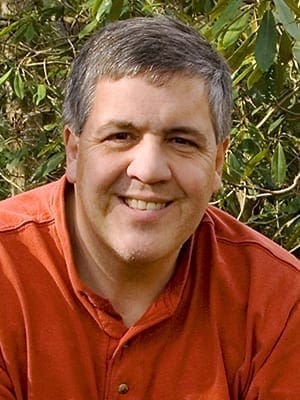I spent some time photographing at Great Basin National Park in Nevada with a friend last year.
As we got to the end of our time there, my friend asked if I would mind if we stopped at the Pando forest in Utah on the way back.
I had never heard of it, so he told me of reading about it in one of Jane Goodall’s recent books and how it is a clonal colony of quacking aspens.
Some researchers believe that it is the Earth’s oldest living thing, some 80,000 years old.
Intrigued by this, we drove to Fish Lake, Utah, and found the forest. I say “forest” but in reality it is a single tree with a massive underground root system that has produced what appears to be some 47,000 trees springing from that system.
Standing in the midst of Pando, it was hard to comprehend how all we saw was part of one thing.
More recently I was reading Rachel Held Evans’ new book, “Searching For Sunday,” and came across a chapter where she, too, talks about the Pando forest.
Evans shares the same basic information I learned from my friend but also indicates that a name has been given to this ancient tree, Trembling Giant.
She then draws some interesting and pertinent analogies between the Pando and the church, writing, “At last count, there are nearly as many denominations in Christianity as there are trees growing from Pando. Each one looks different – beautiful and broken in its own way – but we all share the same DNA.”
Evans added, “Our differences matter, but ultimately, the boundaries we build between one another are but accidental fences in the endless continuum of God’s grace. We are both a forest and a single tree – one big Trembling Giant, stirred by an invisible force.”
Evan’s comparison of the Pando and the church makes sense. The apostle Paul uses a different analogy than Evans in his Corinthian correspondence to make the same point.
He writes, “The body is a unit, though it is made up of many parts; and though all its parts are many, they form one body. So it is with Christ. For we were all baptized by one Spirit into one body – whether Jews or Greeks, slave or free – and we were all given the one Spirit to drink” (1 Corinthians 12:12-13).
I’ve grown increasingly concerned in recent weeks about how polarized things are in Christianity these days.
The way many Christians attack one another when they disagree would make an outsider think we were in the midst of a civil war.
Some Christian groups believe that they have a monopoly on truth and that all others are either not Christians or sub-Christian.
The sources of contention are innumerable but include things like how one views the inspiration of Scripture, the age of the Earth, the second coming, the sacraments, women in ministry and the list could go on.
For some, if you do not agree with their understanding of any of these, or other matters, you are deemed a heretic or worse. Yet, according to Paul, we are all one body.
We’re like the trees at the Pando forest. What we see with our eyes appears to be a bunch of different trees but in reality was one living organism.
There is no way that the various churches or denominations in the world are going to agree on everything.
I’m not even sure they should, as I’m convinced our diversity should be honored and celebrated.
Yet, I wish somehow, someway, we would quit focusing on what separates us as Christians and concentrate on what we have in common.
As the New Testament boldly affirms, “There is one body and one Spirit … one Lord, one faith, one baptism, one God and Father of all, who is over all and through all and in all” (Ephesians 4:6).
A few hours before he was crucified, Jesus prayed earnestly that his followers “might be one” (John 17:21).
I don’t believe he expected us to all think exactly alike, but we are to live our lives cognizant of the fact that in him we are all one.
Jesus sought also to make clear before his death that his followers should be known first and foremost by their love for one another. “By this all men will know that you are my disciples, if you love one another” (John 13:35).
My hope and prayer is that followers of Christ will learn to set aside their differences, focus on what they have in common and actually present a unified witness to the world that is characterized by love.
Is that too much to ask? Jesus didn’t think so.
 Chuck Summers is a pastor of the First Christian Church (Disciples of Christ) in Henderson, Kentucky. He is also a photographer whose work has appeared in numerous national magazines and calendars; he has published three photography books. A version of this article first appeared on Seeing Creation, a blog that Summers co-authors with Rob Sheppard, and is used with permission.
Chuck Summers is a pastor of the First Christian Church (Disciples of Christ) in Henderson, Kentucky. He is also a photographer whose work has appeared in numerous national magazines and calendars; he has published three photography books. A version of this article first appeared on Seeing Creation, a blog that Summers co-authors with Rob Sheppard, and is used with permission.
Chuck Summers is a pastor of the First Christian Church (Disciples of Christ) in Henderson, Kentucky.

